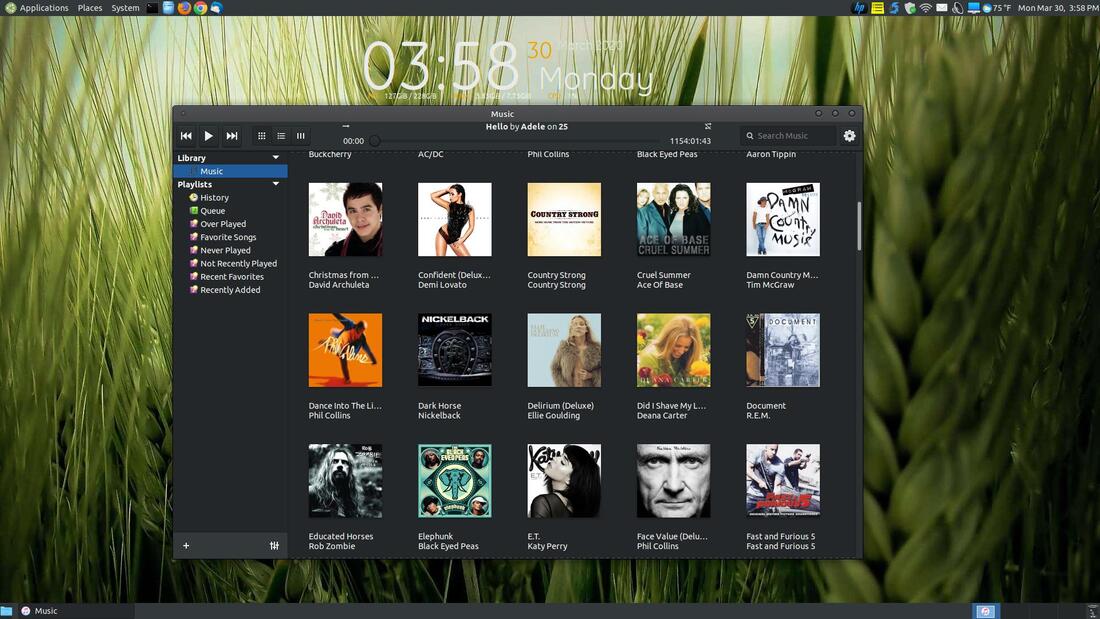

Soundconverter .deb software#
I must say that the Yast software installer has really improved through the years and has become much faster than before. You can also easily browse for installed or available packages as they are well categorized. To get additional packages, you have to enable the software repositories first, and then just search for the applications that you want. Installing, removing, and updating software packages through Yast is hassle-free. I also installed the non-oss "flash player" for watching flash-based videos on the web. I'm a little bit disappointed that GIMP was not included out-of-the-box, so I downloaded and installed it with the help of Yast graphical installer. To name some, there's Firefox 3 (Beta 5) web browser, Kopete IM, office suite, Amarok audio player, Gwenview image viewer, and plenty more.
Soundconverter .deb free#
OpenSUSE 11 is packed with plenty of important free and open source software. It's true that KDE 4 is still quite buggy as I've encountered some of its minor glitches, but I think it's pretty much usable and stable enough for daily and productive use. If you have a not-so-old machine and want to experience desktop bling, then KDE 4 might satisfy your desire. It is very responsive even when running in VM (Virtual Machine) environment. KDE 4 looked stunning indeed, and the good thing is that it didn't sacrifice "speed". However, after having used KDE 4 in openSuSE 11, I must say that I'm loving it, although not totally. I'm not really a big fan of the K Desktop Environment as I've always said before. Everything looks polished - the grub menu screen, the boot image, the login menu screen, and the default wallpaper. openSUSE 11 is no different and can surely satisfy those who loves a beautiful looking desktop.

Almost all those who have used the most previous versions of openSUSE can definitely notice its trademark elegant and professional-looking themes and artworks. After the installation, you will have to reboot to use your newly installed system. The last step is creating a new user, and then you will be given an option to double-check before the "Live" image can be copied to the hard drive. I said easy because there's already a suggested partition and you can just use it if it suits you. Then, you will have set the "Clock and Time Zone", followed by the easy "Partitioning". You will also have to agree to the "License Term" to go on. The "Yast Installer" welcome screen will then open where you can set the "Language" and the "Keyboard layout". Here's my openSUSE 11 installation walkthrough - The Live CD set-up kicks off after clicking the "install" icon, of course. The process is very simple and it only requires a few steps to get the system fully installed. The installation was very straightforward that I think even my grandma can figure it out. This is the part where I'm really impressed. Memory: 2GB DDR2 RAM with 512 MB allocated to VM memory Hard Drive: Samsung 80GB ATA with 8GB allocated to VM disk So, what's up with openSUSE 11? Is it good enough to finally beat Ubuntu on the desktop? Read on to find out. My main reason for this is that I wanted to finally try out the much talked about KDE 4. I usually go for GNOME, but this time I got the KDE 32-bit edition. At first, I was still contemplating on which flavor to get since openSUSE is available in both Gnome and KDE Live CD versions. OpenSUSE 11 (Release Candidate) is out already, so it's the one that I grabbed. Since the latest version of openSUSE is about to be released and it promises some major enhancements over its predecessor, I decided to take a look at my former favorite distro to see what's been going on.

However, I switched to Xubuntu as I'm more obsessed with speed and simplicity nowadays more than anything else. j, -jobs= Force number of concurrent conversions.I have been an avid openSUSE user in the past as it worked perfectly on my main workstation. This indicatesĬommand line batch mode and disables the graphical user interface. t, -tags Show tags for input files instead of converting them. That the suffix does not affect the output MIME type.

s, -suffix arg Set the output filename suffix for batch mode. d, -debug Print additional debug information. Use shortcuts: aac, flac, mp3, vorbis, wav. Note that you probably want to set the output suffix as well. m, -mime-type arg Set the output MIME type for batch mode. You can use this from, say, shell scripts. b, -batch Convert in batch mode, from command line, without a graphical user OPTIONS ¶ -h, -help Print out a usage summary. Interactive use in the GNOME environment. It can work from the command line, but is really meant for Soundconverter is a simple tool for converting sound files Soundconverter - convert sound files to other formats SYNOPSIS ¶


 0 kommentar(er)
0 kommentar(er)
